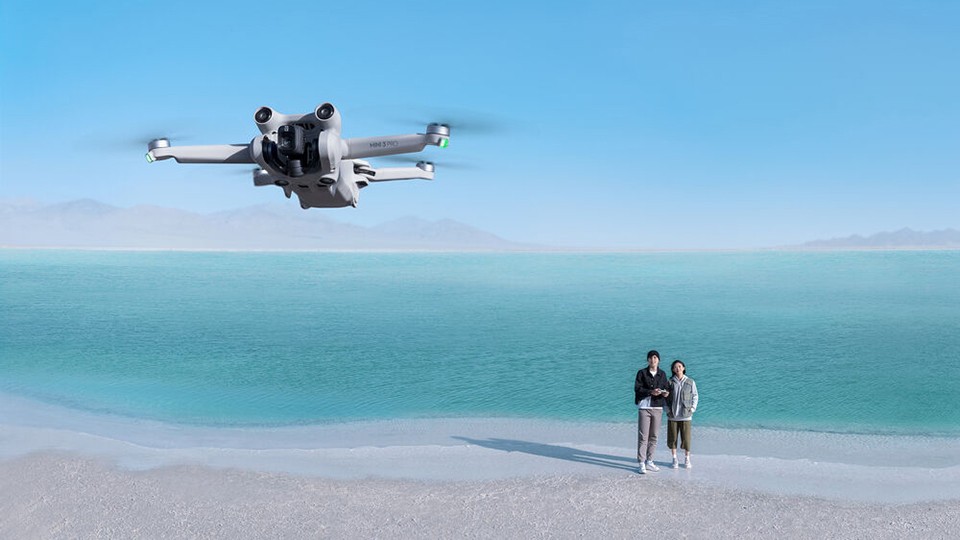Drones with obstacle avoidance is a handy feature on drones but it’s important to understand the limitations and different types of object avoidance. In this article I’ll go through the best drones for obstacle avoidance, the different types of obstacle avoidance, and how they work.
Are you passionate about drone flying but frustrated by frequent collisions with obstacles? Maybe you’re tired of the time and money spent on unnecessary drone repairs and replacements resulting from avoidable accidents.
What is Drones with obstacle avoidance?
Utilizing sensors, obstacle avoidance identifies objects along the drone’s flight path and autonomously guides the drone around the obstacle or hovers in place if a safe route isn’t detected.
A limitation of drones with obstacle Avoidance
While obstacle avoidance is beneficial, it’s crucial to grasp its limitations.
Drone obstacle avoidance tech is advancing, but it might struggle with detecting small objects such as power lines or thin tree branches.
In confined spaces, obstacle avoidance can become overly cautious. It requires several meters to navigate through tight areas; otherwise, the drone may hover rather than obey your commands.
Understanding How Drone Obstacle Avoidance Works
Different types of obstacle avoidance sensors are utilized in drones, often employing a combination of these technologies.
Infrared (IR) Sensors: These sensors identify alterations in infrared wavelength light waves, commonly associated with heat radiation. They serve as motion detectors for activating lights or security cameras, responding to human heat radiation. With mass production feasibility, IR sensors are cost-effective and are even incorporated in thermal drone cameras.
Stereo and Monocular Vision: Comparable to human eyes, stereo vision employs two sensors at distinct positions to create an image, while monocular vision utilizes a single sensor for the same purpose.
Ultrasonic Sensors: Emitting inaudible sound waves, ultrasonic sensors assess object proximity based on the returning sound wave’s time. By calculating the speed of sound, the drone gauges an object’s vicinity and adjusts its trajectory accordingly.
Additional sensor types encompass time-of-flight and LiDAR (light detection and ranging), operating on analogous principles of measuring and monitoring light and sound. Yet, delving into these complexities is beyond the scope of beginner understanding.
Types of Obstacle Avoidance on Drones
Obstacle avoidance systems in drones are categorized based on the extent of coverage they offer, influenced by the number and arrangement of sensors:
- Single Direction: This term is infrequently used concerning drone obstacle avoidance and usually refers to a sensor on the drone’s underside, maintaining a specific height above the ground. Such systems are commonly known as downward sensing systems. For instance, DJI Avatar.
- Bi-Directional Obstacle Avoidance: This type detects obstacles in two directions, usually forward and underneath the drone, requiring a minimum of two sensors. Forward sensing systems often consist of two sensors with overlapping ranges. An example is the DJI Inspire
- Tri-Directional Obstacle Avoidance: This variant identifies obstacles ahead, behind, and below the drone. However, it doesn’t protect against lateral movements alongside the drone while orbiting objects. Seen in drones like the DJI Mini 3 Pro.
- Omni-Directional Obstacle Avoidance: Despite the term typically implying “all directions,” this isn’t precisely accurate for drone obstacle avoidance. In drones, omnidirectional obstacle avoidance encompasses 360 degrees in the lateral field, along with upward and downward-facing vision systems. The range nearly covers the entire drone’s surroundings, as seen in the Mavic 3 Classic.
Which DJI drones with obstacle Avoidance?
EXO X7 Ranger (Best Budget Drone With Obstacle Avoidance Sensor)
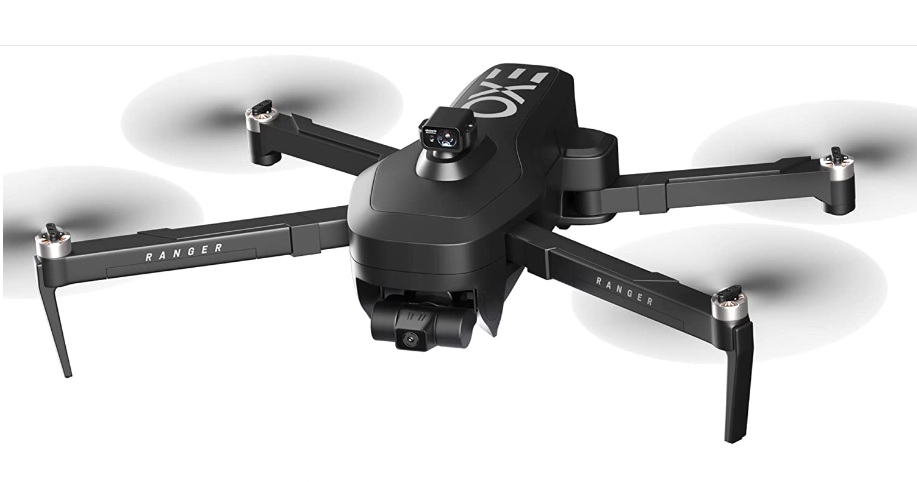
Discover the EXO X7, equipped with a potent 4K camera and a 3-axis gimbal, perfect for capturing remarkable aerial visuals effortlessly. Whether you’re a professional photographer or an enthusiast aiming for vacation snapshots, the EXO X7 has your needs covered.
However, the camera is just the initial highlight of the EXO X7’s exceptional features. It’s furnished with obstacle avoidance technology, employing sensors to identify and circumvent obstacles in its path. This ensures confident flying, even in confined spaces or challenging landscapes.
Beyond these remarkable attributes, the EXO X7 showcases an extended battery life, offering a range of up to 2,000 feet. Plus, boasting a maximum speed of 27 miles per hour, it enables you to explore extensive areas swiftly and efficiently.
EXO X7 Ranger Specifications
- Video Capture Resolution: FHD 1080
- Item Weight: 3 Pounds
- Product Dimensions: 11 x 8 x 3 inches
- Battery Capacity: 3200 Milliamp Hours
- Media Type: SD Card
- Wireless Communication Technology: Wi-F
- Battery Cell Composition: Lithium Polymer
- Video Output Resolution: 1280×720 Pixels.
My Conclusion Regarding the EXO X7 Ranger
In conclusion, the EXO X7 Ranger Plus stands out as an outstanding drone, providing an array of advanced capabilities at a cost-effective price. If you’re seeking a budget-friendly drone equipped with obstacle avoidance and a top-notch camera, the EXO X7 Ranger Plus is the ideal choice to consider.
Autel EVO Nano Plus (Best Camera Drone With Obstacle Avoidance Sensor)
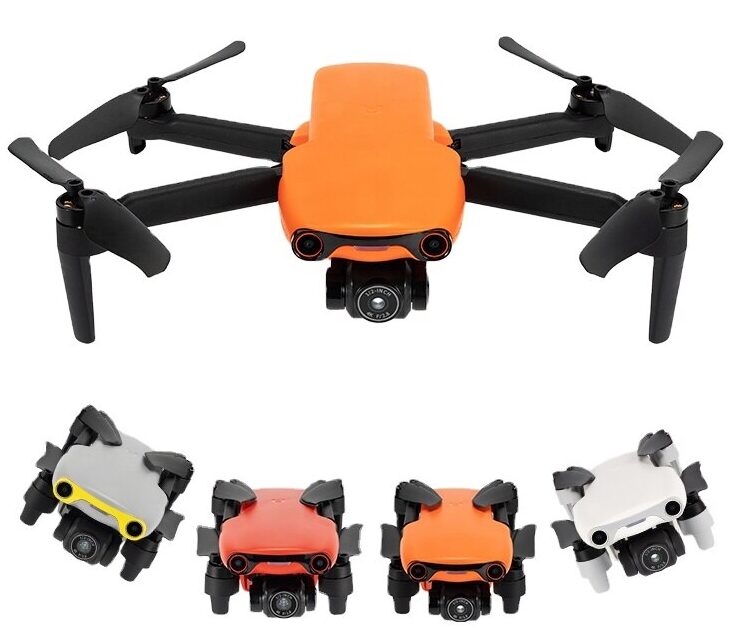
Introducing the EVO Nano Plus: A lightweight, foldable drone equipped with cutting-edge obstacle avoidance technology, making it the premier choice for photographers and videographers.
With its three-way binocular vision sensors, the EVO Nano Plus can effortlessly detect and navigate around obstacles, ensuring a seamless flight experience.
The Autel EVO Nano Plus also features an exceptional 4K/30FPS HDR video camera and a 50MP photo 1/1.28″(0.8″) CMOS RYYB sensor, guaranteeing exceptional, high-quality visuals on every capture.
Enhanced by a 3-axis gimbal for steady camera movement and a 3-way obstacle avoidance system, the EVO Nano Plus safeguards your investment while delivering exceptional performance.
Autel EVO Nano Plus Specifications
- Weight: 249 grams
- Folded Dimensions (excluding propellers): 140×90×50 mm (L×W×H)
- Unfolded Dimensions (including propellers): 264×310×50 mm (L×W×H)
- Diagonal Length: 231 mm
- Max Ascent Speed: 6 m/s
- Max Descent Speed: 4 m/s
- Max Horizontal Speed: 15 m/s
- Max Takeoff Altitude: 4000 m
- Max Flight Time: 28 minutes
- Max Hovering Time: 26 minutes
- Max Flight Distance: 16.8 minutes
- Max Wind Speed Resistance: 10.7 m/s (Level 5)
- Photo Resolution: 50M: 8192×6144
- Video Resolution: 4K Ultra HD: 3840×2160 @60 fps
- Max Bit Rate: 100 MBPS
- Wi-Fi Transfer: 20 MB/s
- Battery Capacity: 3930 mAh
- Battery Charging Time: 90 minutes
- Max Charging Power: 30 W
- File Storage: micro SD card (256 GB max)
My Verdict on the EXO X7 Ranger
In conclusion, the EXO X7 Ranger Plus stands out as an outstanding drone, delivering a multitude of advanced capabilities at a budget-friendly cost. If you’re seeking a drone that combines obstacle avoidance technology with a top-notch camera, the EXO X7 Ranger Plus is your ideal choice.
Drone X Pro Limitless 4:( Ultimate Long-Range Drone with Obstacle Avoidance Sensor)
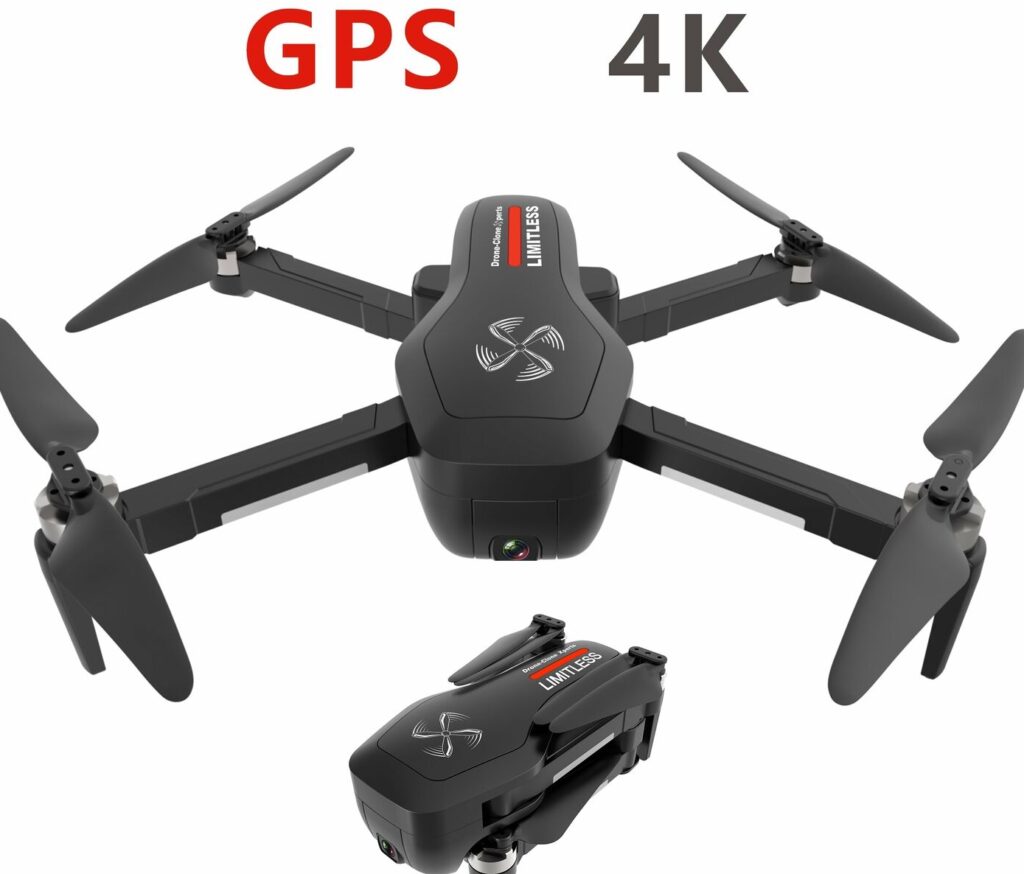
Introducing the Drone X Pro Limitless 4: Enhanced Obstacle Avoidance Drone
The Drone X Pro Limitless 4 introduces an advanced EVO obstacle avoidance system that employs laser scanning to detect and effortlessly navigate around objects in its flight path. With this cutting-edge technology, you can confidently pilot your drone for extended durations, free from the worry of collisions.
A standout feature of the Drone X Pro Limitless 4 is its impressive long flight range, extending up to 7 kilometers. This capability allows for captivating long-range flights, enabling the capture of stunning aerial imagery and videos from considerable distances.
Maintaining a stable connection during flights is a given, thanks to its 5G WiFi FPV live video transmission system. This technology ensures seamless connectivity throughout your flight experience.
Furthermore, the Drone X Pro Limitless 4 boasts an extended flight time of up to 40 minutes. This generous duration allows you to explore expansive landscapes, record awe-inspiring visuals, and return home without concern for battery depletion.
Equipped with an auto-return home feature, the drone guarantees an automatic return to its take-off point in the event of a low battery or signal loss. This ensures a safe and reliable flight experience, enhancing peace of mind during your aerial ventures.
Drone X Pro Limitless 4 Specifications
- Video Capture Resolution: 4K High Definition
- Connectivity Technology: Wireless via Wi-F
- Item Weight: 1.2 Pounds
- Battery Capacity: 5000 Milliamp Hour
- Mirror Adjustment: Remote Control-enabled
- Media Type: SD Card
- Wireless Communication Technology: Wi-Fi
- Battery Cell Composition: Lithium Ion
- Battery Inclusion: Yes
- Remote Control Inclusion: Yes
- Product Dimensions: 11″L x 10″W x 3″H
- Batteries: 1 Lithium Polymer battery
My Verdict on the Ruko F11 GIM2
In conclusion, the Drone X Pro Limitless 4 stands as an ideal choice for extended-range flights, offering a combination of remarkable flight range, extended flight time, auto-return home functionality, and the advanced EVO obstacle avoidance system.
This drone empowers you to enjoy prolonged flights while effectively preventing collisions with obstacles, providing both safety and peace of mind for you and your valuable investment.
DJI Mini 3 Pro (Top Obstacle-Avoidance Drone Under 250 Grams)
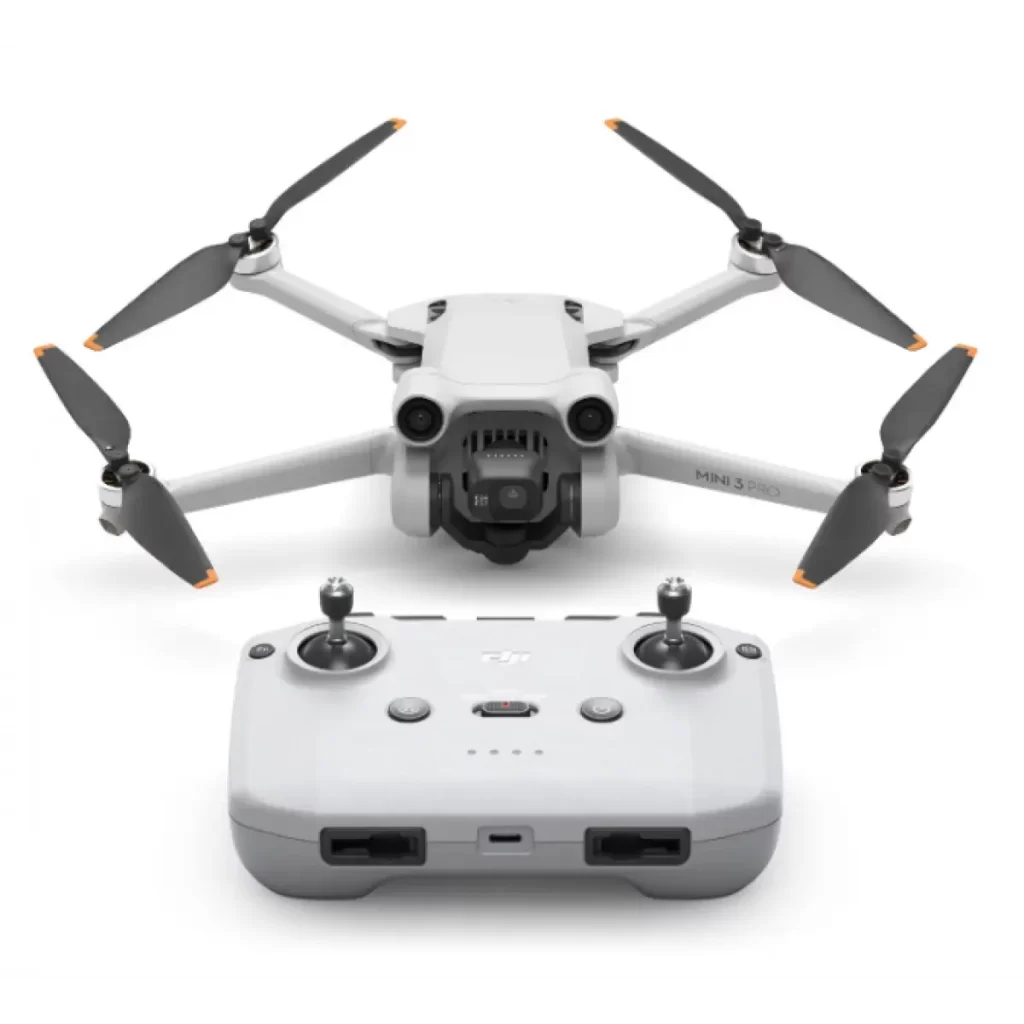
The Mini 3 Pro is outfitted with a 4K/60fps video camera and a 48MP sensor, guaranteeing the capture of top-notch footage and images. Furthermore, boasting a flight duration of up to 34 minutes, you have ample time to seize breathtaking aerial snapshots.
An outstanding attribute of the DJI Mini 3 Pro is its advanced obstacle avoidance system. Equipped with front, rear, and downward sensors, this drone can identify and steer clear of obstacles in its trajectory, enhancing flight ease and minimizing crash risks.
The Mini 3 Pro also incorporates a return-to-home feature, ensuring the drone’s safe return to its take-off point in case of signal loss or low battery levels. This attribute enhances safety and provides added assurance during flights.
Specifications of DJI Mini 3 Pro
- Weight: Below 249 grams
- Folded Dimensions (excluding propellers): 145×90×62 mm (L×W×H)
- Unfolded Dimensions (with propellers): 251×362×70 mm (L×W×H)
- Diagonal Length: 247 mm
- Max Ascent Speed: 5 m/s
- Max Descent Speed: 5 m/s
- Max Horizontal Speed: 16 m/s
- Max Takeoff Altitude: 4000 m
- Max Flight Time: 34 minutes
- Max Hovering Time: 30 minutes
- Max Flight Distance: 18 km
- Max Wind Speed Resistance: 10.7 m/s (Level 5)
- Photo Resolution: 48 MP: 8000 X 6000
- Video Resolution: 4K Ultra HD: 3840 x 2160 @ 60 fps
- Sensing Type: Downward vision system
- Video Transmission System: DJI O2
- Battery Capacity: 2453 mAh
- Battery Charging Time: 1 hour
- Max Charging Power: 30 W
- File Storage: micro SD card (256 GB max)
My Take on the DJI Mini 3 Pro
In summary, the DJI Mini 3 Pro stands as the top drone under 250 grams equipped with obstacle avoidance, catering to both novices and skilled aviators seeking a lightweight yet potent drone packed with advanced capabilities.
For further insights on the DJI Mini 3 Pro, explore the link below.
Tucok 193MAX2S: Ultimate High-Altitude Drone with Obstacle Avoidance

Setting the Tucok 193MAX2S apart is its advanced obstacle avoidance system. With an exceptional detection range of 65 feet (20 meters), it swiftly identifies obstacles and maneuvers around them, crucial for safe high-altitude flights.
Equipped with a brushless motor, this drone ensures stability, efficiency, and longevity. Its GPS auto-return home feature simplifies landing by bringing the drone back to its take-off point effortlessly.
Tucok 193MAX2S Specifications
- Weight: 820g
- Dimensions Folded (w/o propellers): 210x104x85 mm (LxWxH)
- Dimension Unfolded (w/ propellers): 430x517x85 mm (LxWxH)
- Diagonal Length: 368 mm
- Max Ascent Speed: 8 m/s
- Max Descent Speed: 4 m/s
- Max Horizontal Speed: 19 m/s
- Max Takeoff Altitude: 5000 m
- Max Flight Time: 40 min
- Max Hovering Time: 38 min
- Max Flight Distance: 24 km
- Max Wind Speed Resistance: Level 7
- Photo Resolution: 50MP: 8192×6144
- Video Resolution: 4K Ultra HD: 3840×2160 @60 fps
- Max Bit Rate: 120 MBPS
- Wi-Fi Transfer: 20 MB/s
- Battery Capacity: 6175 mAh
- Battery Charging Time: 90 min
- Max Charging Power: 78 W
- File Storage: micro SD card (256 GB max)
File Storage: micro SD card (256 GB max)
My Verdict on the Tucok 193MAX2S
In conclusion, the Tucok 193MAX2S stands out as the premier high-altitude drone featuring exceptional obstacle avoidance. With its blend of top-tier attributes including a premium camera, extended battery duration, and advanced obstacle detection, it offers an unmatched aerial adventure.
For both seasoned videographers and nature enthusiasts, the Tucok 193MAX2S is a must-have drone. Don’t miss out – click the button below for further details on the Tucok 193MAX2S.
Autel EVO Lite Plus: (Ultimate Drone with Obstacle Avoidance)

The DJI Air 2S stands out among “follow-me” drones due to its advanced obstacle avoidance system, detecting objects in four directions to ensure safe flights. This is particularly valuable during action sports when the focus is on the activity, not piloting.
The drone offers an extended 31-minute flight time, granting ample recording time. Featuring a 1-inch CMOS sensor and 5.4K video, it produces detailed professional-grade footage. The drone’s 12 km 1080p video transmission enhances real-time monitoring.
DJI Air 2S Specifications
-
- Weight: 595 grams
- Dimensions Folded (without propellers): 180×97×77 mm (LxWxH)
- Dimension Unfolded (with propellers): 183×253×77 mm (L×W×H)
- Diagonal Length: 302 m
- Max Ascent Speed: 6 m/s
- Max Descent Speed: 6 m/s
- Max Horizontal Speed: 16 m/s
- Max Takeoff Altitude: 5000 m
- Max Flight Time: 30 minutes
- Max Hovering Time: 31 minutes
- Max Flight Distance: 18.5 km
- Max Wind Speed Resistance: 10.7 m/s (Level 5)
- Photo Resolution: 5472×3078 (16:9)
- Video Resolution: 5.4K: 5472×3078 @30 fps
- Sensing Type: Downward vision system
- Video Transmission System: DJI O2
- Battery Capacity: 3500 mAh
- Battery Charging Time: 1 hour
- Recommended Charger: DJI 35W USB-C Charger
- File Storage: micro SD card
- Sensing Type: Downward vision system
My Verdict on the DJI Air 2S
To sum up, the DJI Air 2S stands out as an ideal option for drone enthusiasts seeking the ultimate “follow-me” drone equipped with obstacle avoidance capabilities.
Combining cutting-edge Active Track 4.0 technology, obstacle avoidance functionalities, extended flight duration, and a top-notch camera, the DJI Air 2S is your perfect partner for any upcoming adventure. Whether you’re hiking, biking, or driving, rely on the DJI Air 2S to capture every thrilling moment.
Crucial drones with obstacle avoidance
Although drones are crafted for flight, not all incorporate the capacity to sidestep obstacles. If you opt for a drone without this technology, collisions can occur, risking potential damage. Drones with obstacle detection cameras preemptively halt flight to avert crashes. Some possess single sensors, while others boast multiple sensors, ensuring comprehensive flight path analysis. These sensors don’t necessarily alter flight complexity, but they act as safeguards against crashes.
Drones equipped with obstacle avoidance often feature the follow-me function, making them adept at tracking subjects. However, even with this technology, exercising caution is essential, particularly in intricate environments such as forests or urban areas.
Frequently Asked Questions
1. What is drone obstacle avoidance?
Drone obstacle avoidance refers to the technology and sensors that allow drones to detect and avoid obstacles in their flight path. These sensors use various methods such as lasers, cameras, infrared, ultrasonic waves, and more to identify potential obstacles and alter the drone’s flight trajectory to avoid collisions. This feature enhances the safety of drone flights, especially in complex environments, and reduces the risk of accidents caused by collisions with objects like buildings, trees, or other aircraft.
2. Is obstacle avoidance necessary for a drone?
Drones come in various types, categorized by size, purpose, and design. While certain drones like micro drones, racing drones, or agricultural drones may not require obstacle avoidance, they hold significance for others.
Obstacle avoidance serves as a crucial feature, especially for novice pilots, helping prevent unintended crashes. When flying beyond the visual line of sight, this technology acts as an alert system, detecting potential obstacles such as trees, buildings, or other hindrances along the flight path.
3. What is the most budget-friendly drone featuring obstacle avoidance?
Obstacle avoidance technology tends to raise drone prices. Presently, the Hubsan Zino Mini Pro ($499) stands as the most affordable option for obstacle avoidance.
4. What DJI drones incorporate obstacle avoidance?
DJI integrates obstacle avoidance sensors into the majority of its drone models. Below is the list:
- DJI Mini 3 Pro
- DJI Air 2S
- Mavic Air 2
- Mavic 2 Pro
- Mavic 2 Zoom
- Phantom 4 Pro
- Phantom 4 Pro V2.0
- Inspire 2
- Mavic Air
- Mavic Pro
- Mavic Pro Platinum
What drones have no geofencing?
As of my last knowledge update in September 2021, most consumer drones, including those from popular manufacturers like DJI, have some form of geofencing built into their software to prevent flights in restricted or sensitive areas, such as near airports or government facilities. This is done to ensure safety and compliance with aviation regulations.
However, it’s important to note that drone regulations and technologies may have evolved since then. Always check the latest information and the specific drone’s documentation to understand its geofencing capabilities and any updates related to this feature. Keep in mind that flying drones responsibly and within legal boundaries is crucial for the safety and the overall reputation of the drone community.
Final Thoughts on the Best Drones With Collision Avoidance Sensor
We’ve concluded our exploration into the top drones with extended flight times in 2023.
In summary, the Autel EVO Lite Plus stands out as an exceptional choice, offering reliable obstacle avoidance, impressive camera capabilities, and lengthy flight duration—making it a top contender for both casual and professional use.
In closing, drones featuring obstacle avoidance are gaining popularity due to their heightened safety and user-friendliness.
Remember to consider factors like flight time, range, camera quality, obstacle avoidance, and cost when selecting your ideal drone.
If you’re still searching, be sure to explore my comprehensive 2023 drone guide, which covers various categories and purposes.
Share this insightful article with fellow drone enthusiasts through social media, using the share button below, and spread the knowledge you’ve gained today!

